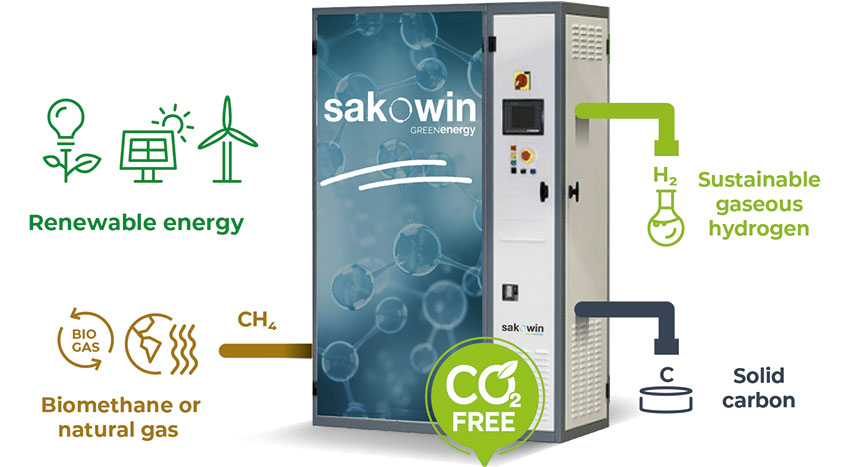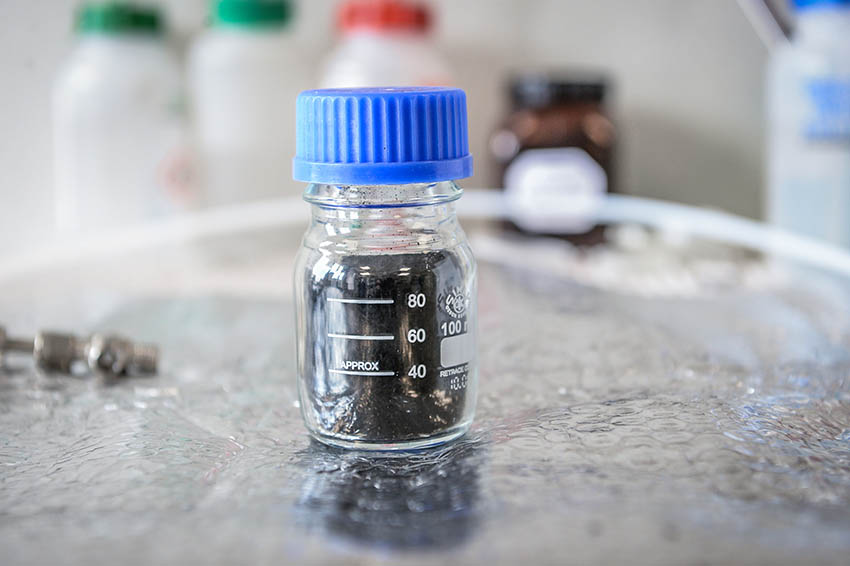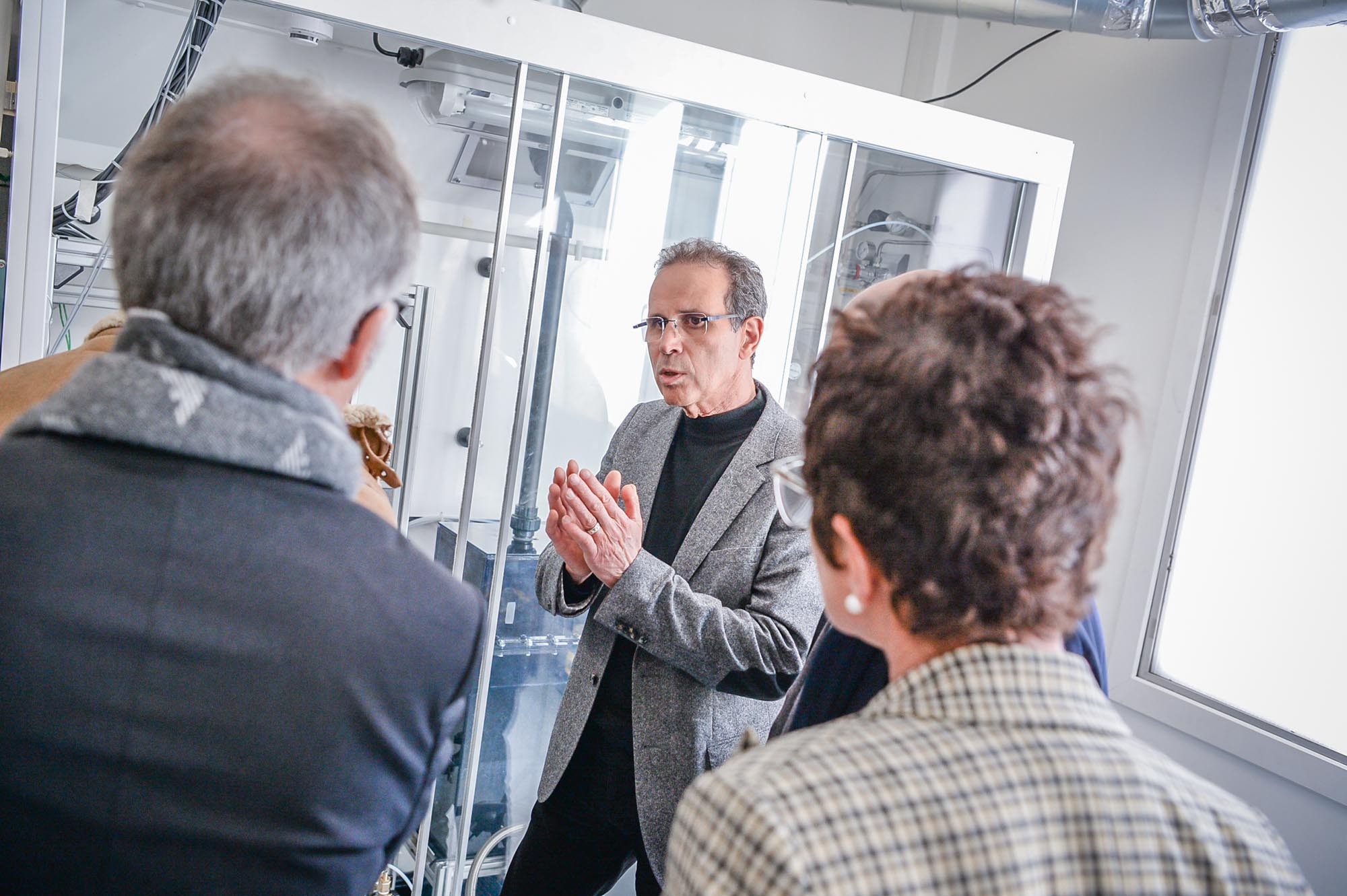Sakowin is developing a CO2-free, on-demand, on-site solution to produce low-cost sustainable hydrogen from biomethane or natural gas.
The company offers a new reactor technology to produce hydrogen and solid carbon from biomethane or natural gas. Using low energy plasma, their process is not only economical in electricity but also low-CAPEX and easily scalable thanks to its modular design. This technological brick will be marketed through OEMs for various markets. Compactness and high energy efficiency make this solution suitable to all industrial sectors interested in competitive CO2-free hydrogen, e.g. decarbonization of industrial processes, land, sea & air transport sectors, production of green electricity, heating of buildings, or the production of hydrogen for the chemical industry.
Installed directly on the consumption site, at the end of a gas line, it allows to use hydrogen on demand, without the need for storing and transporting H2, and it can be installed on existing gas infrastructures.
Interview with Gerard Gatt, CEO of Sakowin.
Easy Engineering: What are the main areas of activity of the company?
Gerard Gatt: Hydrogen and carbon markets
Compared to our competitors and thanks to our patented technology, we use 5 times less electricity than an electrolyzer to produce hydrogen. The result: a cost-competitive hydrogen regardless carbon value. The cost-competitiveness of our technology and its capacity to be CO2 negative will significantly accelerate the development of the $2500 billion hydrogen market.

Additionally, there are several potential applications of the co-produced solid carbon that also have a positive environmental impact. For example, it has been shown that by partly replacing portland cement with solid carbon, the concrete industry could lower their CO2 emissions by 10%.
Another environmental application is in agriculture. Carbon enrichment of soil can help improve its composition and capacities to retain more water.
Therefore, Sakowin’s technology will create an opportunity for new Carbone markets to emerge (building materials, agriculture), going from a current demand market to an offer market.
E.E: What’s the news about new products?
G.G: In March 2022, Sakowin was awarded the Deeptech label and €2.5 million was allocated by Bpifrance: a €500k seed loan associated with its 2021 fundraising and a €2M Deeptech Development Grant. These funds finance expenses related to the R&D phases of a disruptive innovation project before its industrial and commercial launch.
In addition, the company was selected from among more than 1,000 start-ups and SMEs by the EIC Accelerator, which provides €6.5 million in funding through a combination of grants and investments. By joining the EIC community, in addition to the funding, Sakowin will receive privileged access to coaching, mentoring and investors.

E.E: What are the ranges of products?
G.G: Sakowin is developing and has patented a disruptive solution. We use microwave plasma to dissociate methane into gaseous hydrogen and solid carbon, a process called Plasmalysis.
Our equipment is compact, modular and stackable and can be installed at the end of a gas line, allowing us to produce hydrogen on-site and on-demand from existing gas infrastructures
We use a mature and proven microwave plasma to dissociate methane into hydrogen gas AND solid carbon. Our equipment is compact, modular, and stackable for on-site hydrogen production on demand. No need for transport and storage. It can be installed at the end of a gas line of an existing gas infrastructure, valorizing existing assets and allowing current heavy emitters to transform their industries with minimum changes.
The most sustainable route is using BIOMETHANE as the input. This coupling creates a CO2 negative energy solution, allowing to accelerate the energy transition and industries to better offset residual CO2 emissions. While biomethane is developing, natural gas is an intermediate solution to produce hydrogen in large volumes at a competitive cost.

E.E: At what stage is the market where you are currently active? / What can you tell us about market trends?)
G.G: While the IPCC warns of the acceleration of global warming, a hundred states, as well as thousands of companies and communities have committed to achieving CO2 neutrality between 2050 and 2070.
This is a major challenge, given that human activity generated no less than 36.4 billion tons of CO2 in 2021.
If we have to produce energy and not emit CO2 anymore, hydrogen is the best way to do this, at least for the foreseeable future. Industries, governments, and societies have widely accepted this.
Reaching a net zero emission means converting 85% of our current energy (combustion of oil, gas and coal) to hydrogen, which would represent about 10 billion tons of hydrogen to be produced. An order of magnitude significantly higher that current governmental objectives.
To scale up hydrogen production to such a level, what primary energy should we use in addition to solar, wind, hydraulics and nuclear? The last untapped scalable renewable energy source we can use is methane, ideally produced from biomass. But, it has to be used in decomposition without oxygen instead of combustion like it is done today.

In addition, for hydrogen to be a decarbonization solution, it must be produced without emitting CO2 and its cost must be competitive. Currently, most of the available hydrogen production solutions have either a high CO2 balance or costs that are burdened by their high energy consumption, storage or transport.
If we have to be cost competitive, would it be safer to use a molecule that will require the least amount of energy? A methane molecule (CH4) requires 7 times less energy that a water molecule H2O to produce the same amount of hydrogen.
To meet this challenge while respecting the energy economic constraints, Sakowin Green Energy is innovating by proposing a solution for the future: the production of sustainable hydrogen, at a competitive cost, from methane (biomethane or natural gas).

